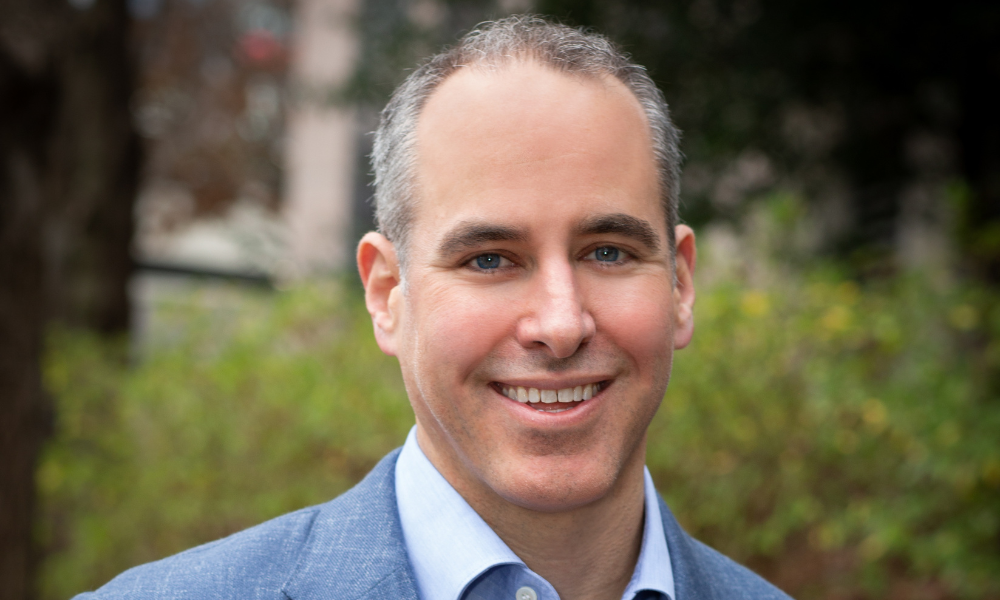Interest rates are continuing to present challenges heading into 2025

It’s seen some of the highest-profile turbulence in the real estate and mortgage markets since the end of the COVID-19 pandemic – and the volatility of the US’s commercial real estate space could have a while to run yet.
While borrower optimism across the wider mortgage market has brightened in the wake of interest rate drops over the past few months, those involved in the commercial space are still adjusting to the rapid increases in borrowing costs seen since 2022, according to a top lending executive.
Greg Friedman (pictured top), managing principal and chief executive officer of Peachtree Group, told Mortgage Professional America that a “choppy” outlook showed little sign of fading for credit markets. “It definitely continues to be a challenging market for commercial real estate in general as it recalibrates to the higher interest rate environment and the impact it’s having on debt service across these assets and the underlying value of assets,” he said.
High interest rates have continued to weigh down the value of those assets, he said – and while capital is accessible for properties with strong cash flows in place, those with a more “transitional” setup are seeing fewer lenders willing to fund a loan, according to Friedman.
That’s an especially acute challenge for real estate owners with maturing loans, particularly as well over $1 trillion worth of loans are set to mature by the end of 2025 and moving into 2026 with a sizable percentage of those having initially been originated in the days of rock-bottom rates during the pandemic.
The 10-year Treasury rate and federal funds rate have since ballooned, bringing about a challenging environment for borrowers who want to refinance assets without injecting additional liquidity for capital.
Michelle Dugan, owner at MS Lending, sees a shift in homebuyer sentiment as mortgage rates drop. Her team is reaching out to clients who had paused purchases due to high rates, now offering rates as low as the mid-sixes. https://t.co/iTTCLiSI2U
— Mortgage Professional America Magazine (@MPAMagazineUS) October 14, 2024
Fed rate cut fails to move the needle for commercial lending
The Federal Reserve opted to cut its funds rate by an oversized 50 basis points in its last decision – but early optimism on the commercial outlook as a result may be little more than “false hope”, according to Friedman.
Surprisingly strong recent labor market figures have called into question the likelihood of another Fed cut at its next meeting, while there remains little clarity on where the central bank will eventually land on a neutral rate.
A soft landing for the economy looks increasingly likely – and while that’s good for consumers, it’s not such a strong outcome for commercial real estate prospects, Friedman said. “Once the Fed is done reducing rates over the next 12 to 18 months… the federal funds rate is probably going to end up somewhere north of 3%,” he explained, “and that’s still going to be three times higher than where it was in the decade pre-2022.
“The 10-year Treasury rate is most likely going to stay somewhere well into the mid-threes to low fours as a percentage. In the decade [before] 2022, it averaged closer to 2%, so the 10-year Treasury rate is going to be almost double where it was.”
That’s significant because a much higher rate means substantially higher cash flows required to recalibrate to the new environment, he added. “I don’t think we’re headed towards a great financial crisis or anything like that, but I do think we’re headed for a harder economic environment for commercial real estate where the environment’s going to be much more sluggish.”
What’s more, while the Fed’s cut grabbed headlines, 10-year Treasury bonds climbed higher in the immediate aftermath – meaning mortgage rates have actually jumped despite the Fed’s move.
Which lenders are seeing potential in the current market?
Still, the challenges at play in the commercial space are presenting opportunities for non-traditional lenders because of the growing reticence of regional, community, and national banks to fund deals.
Friedman said he and his team are closely attuned to that trend. “We’re seeing a huge opportunity to step in and be a direct lender to commercial real estate owners that have loans that are maturing, that need capital to refinance, or need capital to acquire or even develop commercial real estate assets,” he noted.
“We believe there’s going to be a big opportunity to go out and buy assets at more favorable pricing in 2025 and simultaneously, we’re seeing the ability to inject preferred equity into products because a lot of lenders are requiring more equity injection when a loan or an asset is being bought or when someone’s refinancing or even developing an asset.”
Stay updated with the freshest mortgage news. Get exclusive interviews, breaking news, and industry events in your inbox, and always be the first to know by subscribing to our FREE daily newsletter.



